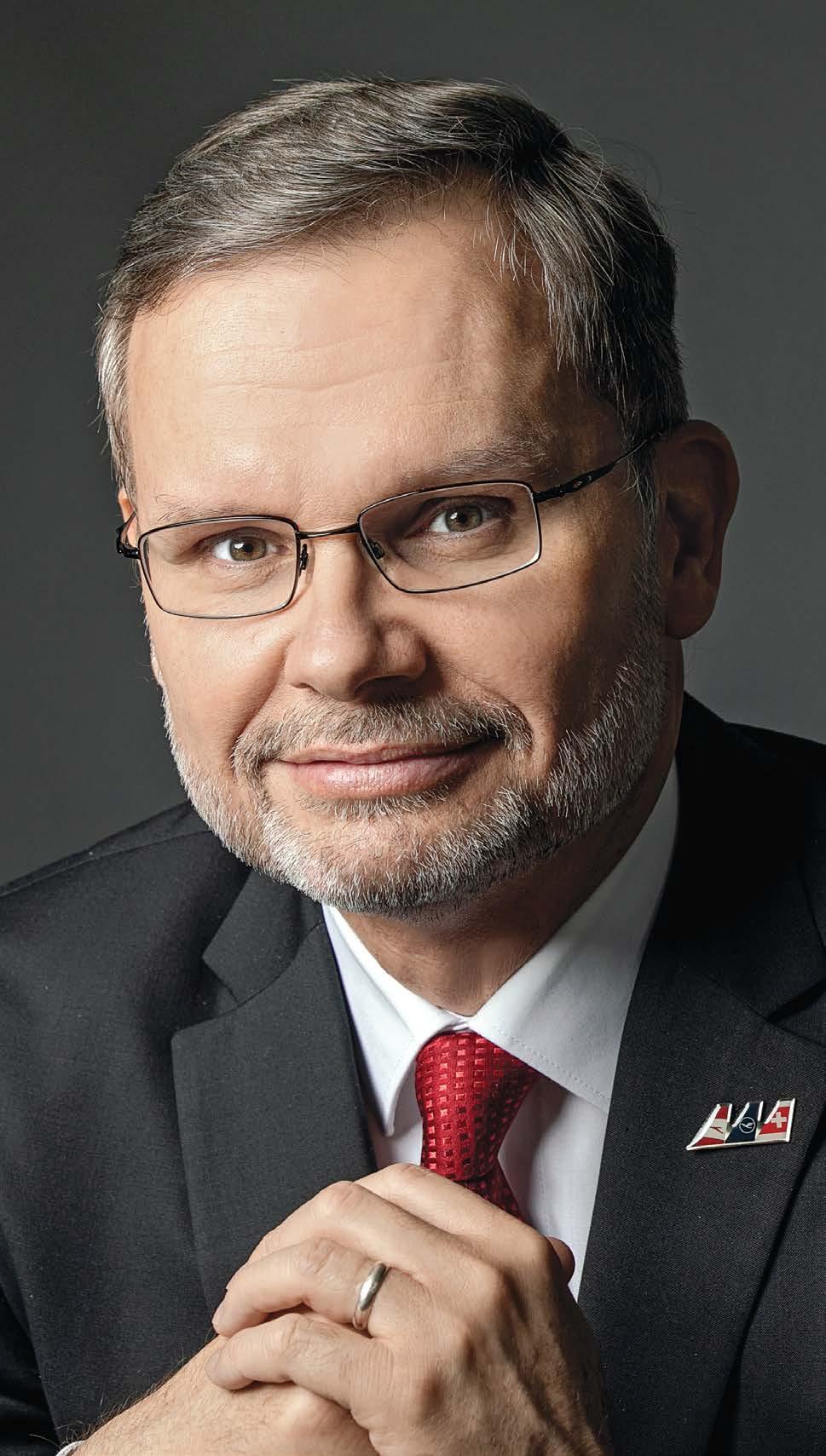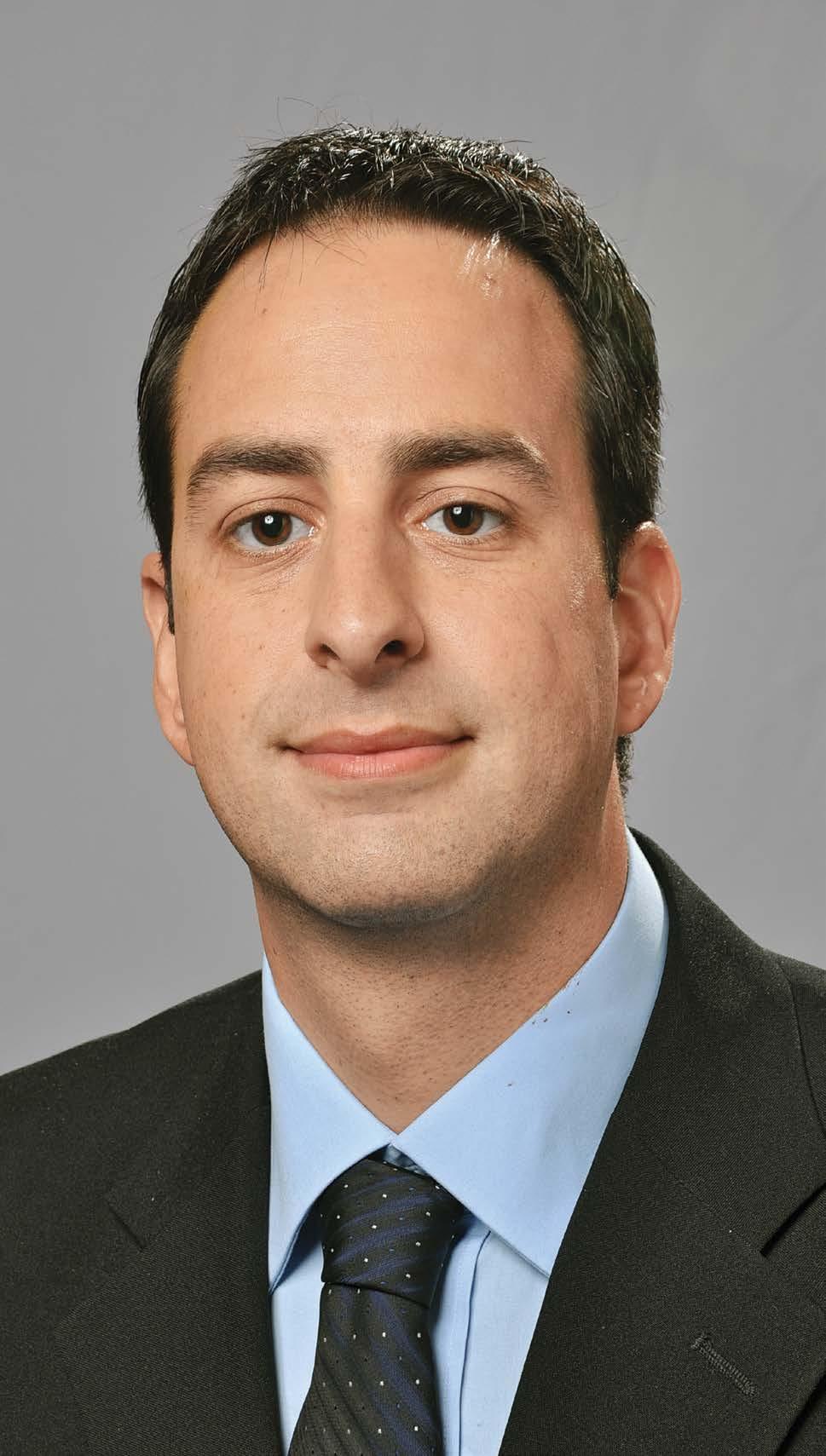
4 minute read
Lufthansa to Reduce Carbon
Q: What have been Lufthansa’s main strategies regarding sustainability in Mexico and Latin America?
A: As we move away from the global pandemic, we are trying to reconnect with our customers in Mexico and Latin America through new operations in Cancun, a key destination for Lufthansa, and with flights from Rio to Munich. After a twoyear pause, we restored flights to Panama through our leisure airline Eurowings.
Sustainability is also essential for us. Lufthansa Group has a great responsibility to the planet, which we honor by reducing our carbon footprint as much as possible. Until 2024, Lufthansa Group will be investing US$250 million in sustainable aviation fuels (SAF). We are the largest consumer of SAF in the EU and the secondlargest worldwide.
Regarding land operations, we are using e-cars and implementing other strategies that will decrease our carbon footprint and support environmental responsibility. We are implementing fully carbon-neutral freight operations to Shanghai. In December 2020, Lufthansa Cargo also became the first airline to implement a carbon-neutral freight flight.
We are also investing in Power-to-Liquid technology. During the next five years, we plan to purchase 25,000L of Power-to-Liquid fuel and use 50,000 tons of SAF per year to transport more than 500,000 passengers. We truly believe that this is the future but we are not doing this alone. We need partners that believe in our mission, so we are collaborating with Porsche in Chile and with Siemens in Abu Dhabi, among other alliances.
Q: What strategy is Lufthansa Group implementing to be CO2 neutral on the ground in its home market by 2030?
A: During the pandemic, we decided to remove older equipment to transform our fleet. By 2025, we will be ordering 120 high-tech aircraft. By 2030, we will have incorporated a total of 180 new aircraft, helping us cut our carbon footprint by 15%. These aircraft include the Boeing 787, Airbus 350 and the smaller Airbus 320. We are replacing old aircraft and every week we are receiving new aircraft, a quite impressive feat in a time when we are recovering from the consequences of a pandemic.
Q: How has the relationship between Lufthansa and Mexico developed as a result of the pandemic?
A: Despite dramatically reducing operations during March 2020, our flights to Mexico recovered quickly. Outside of repatriation flights, our first flight back to Mexico took place on June 4, 2020. Last year, we introduced seasonal flights from Munich and Frankfurt to Mexico City and we fly thrice per week to Vienna and Turin. We also have 50 weekly flights to Cancun, which is much higher than what we flew in the pandemic. Mexico is recovering fast in comparison to other markets in the world.
Our commitment to the Mexican market has never been stronger. We have a long history with Mexico which makes us particularly proud. Lufthansa has played an important role in boosting the relationship between Germany and Mexico. Especially in times of crisis, we have always shown our commitment and support for Mexico.
Q: What projects will expand your operations in Mexico even further?
A: We are launching a Mastercard credit card as a result of the cooperation between Mastercard and Banca Mifel. This card will make it easier to travel and provide several advantages to Mexican travelers, enhancing their travel experience. We are always looking for expansion opportunities.
Q: How has the logistics side of Lufthansa developed in this new world context?
A: The cargo world changed during the pandemic. While the pandemic affected passenger flights, cargo demand increased because it was needed to transport medical or testing equipment and other medical devices. We resumed operations in Mexico rapidly but not only because passengers started to fly; cargo helped us to maintain our services in the market. We gained a greater appreciation of cargo as a result of the pandemic.
Q: How does Lufthansa plan to promote travel in Latin America to help reactivate the tourism sector?
A: Latin America is one of the most important regions for Lufthansa Group and we work with local authorities and boards to promote our new routes. The region is highly popular in the EU and we hope Latin America recovers fully. Summer bookings look promising. People are really hungry to fly again and discover this beautiful part of the world.
We offer over 500 weekly flights from the Americas to Frankfurt, Munich, Zurich, Vienna and Brussels, our four main hubs in the EU. This shows that the Americas are back and recovering. We are starting with the summer schedule and are adding new destinations. We now fly to more destinations than before the pandemic as we try to diversify our offer and connect more people from the EU to the Americas.
Our core objective is to connect people, culture and economies in a sustainable way. For this summer, we will be able to do more with all the connectivity that we are offering.
Q: How has air traffic in the Americas been impacted by the conflict in Ukraine?
A: The situation in Ukraine is very sad and our sympathy is with our colleagues and the Ukrainian people. We do not know in which direction this is heading. Our prayers are with them. The Lufthansa Group has been impacted by this situation. When the conflict started, we decided to stop flights to and over Russia and Ukraine. Those flights that need to cross to Russia are taking more time and cost more but this is something that we had to do to respect the sanctions imposed on Russia.
Q: What opportunities or challenges do you see in the Mexican airspace as Felipe Ángeles International Airport ramps up its operations?
A: We are a network airline so connectivity is essential. For example, Panama is not only a destination, it is a point of connection to other cities. We are always looking for hubs with this possibility because not every destination can afford a direct flight.









